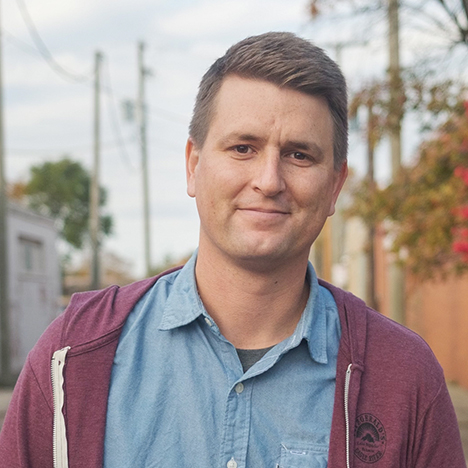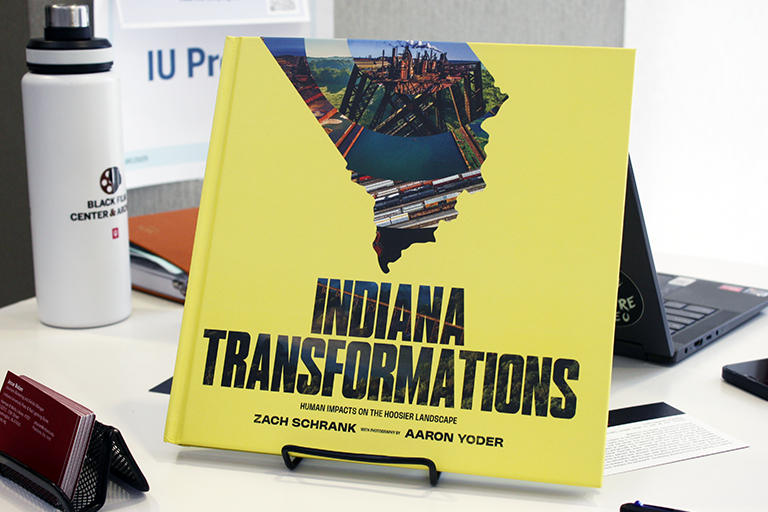A new book produced through a collaboration between Indiana University Press and the IU Environmental Resilience Institute explores how centuries of human settlement and industrialization have transformed the Indiana landscape, leaving no corner untouched.
Indiana Transformations: Human Impacts on the Hoosier Landscape, the second installment of IU Press’ book series on environmental change, showcases familiar Indiana locations through an unfamiliar lens—aerial drone photography—and encourages viewers to reflect on Hoosiers’ relationship with the local environment.
The book, composed by IU South Bend Professor Zachary Schrank and photographer Aaron Yoder, serves as a companion to the co-authors’ 2023 documentary film Liminal: Indiana in the Anthropocene.
“Not everyone has 55 minutes to spend watching a film, but most people have time to flip through a coffee table book,” Schrank said. “Through this book, we were able to provide a look at changes happening right here in Indiana and give a little bit more context than the film.”
Indiana Transformations follows the state’s resource-intensive economy that has supported the livelihoods of Hoosiers for more than a century—oftentimes at a hidden cost.
At the turn of the 20th century, Indiana remained largely rural, but by the mid-1920s the state became a magnet for resource extraction and manufacturing. Today, Indiana leads the nation in the production of steel and is a leading manufacturer of automobiles, recreational vehicles, electrical equipment, pharmaceutical products, and more. Despite coal’s shrinking marketing share for energy production, nearly half of the electricity generated in the state today still comes from burning the fossil fuel, contributing to Indiana’s outsized carbon pollution as well as air and water quality issues.
To create the book, Schrank and his team repurposed footage captured during creation of Liminal and incorporated photos from new locations not included in the film.
While Liminal is more contemplative, using music to take viewers on an emotional journey, Schrank says Indiana Transformations provides more information about featured locations, their economic and environmental impacts. He was specifically interested in showing a wide range of settings in the book, from agricultural fields to steel production to automative assembly sites. Schrank also includes images of urban life—playgrounds, construction sites, cemeteries, and more.
The book’s bird’s eye view leaves readers with a complex picture of Hoosiers’ industrial century and relationship to the land without being prescriptive.
“One of the strengths of both the film and the book is that they’re not telling the viewer specifically how to interpret the images. We really let the images speak for themselves,” he said.
About the Environmental Resilience Institute
Indiana University’s Environmental Resilience Institute connects a broad coalition of government, business, nonprofit, and community leaders to help Indiana and the Midwest better prepare for the challenges of environmental change. Together, we integrate research, education, and community to create environmental resilience and climate solutions—building a more sustainable, equitable, and prosperous future. Learn more at eri.iu.edu.




